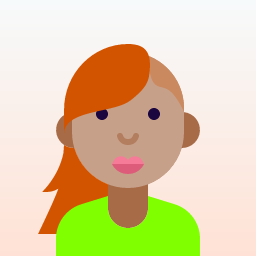When visiting Chile, it’s always a great idea to learn a few basic greetings to make a positive impression. Saying “hello” in the local language shows respect for the culture and helps you connect with the locals. In this guide, we will explore both formal and informal ways to say “hi” in Chile, as well as provide some regional variations to help you navigate different contexts. Let’s dive in!
Formal Greetings:
Formal greetings are generally used when addressing older people, strangers, or those in positions of authority. These expressions are ideal in professional settings or when meeting someone for the first time.
1. “Hola” (Informal) / “Buenos días” (Formal)
“Hola” is a casual way to say “hi” in Chile, but if you prefer a more formal approach, especially in the morning, you can use “Buenos días” which means “good morning”. This greeting is suitable to use until around midday.
Example:
Carlos: Buenos días, señor. (Good morning, sir.)
Mr. Gonzalez: Buenos días, Carlos. ¿Cómo estás? (Good morning, Carlos. How are you?)
2. “Buenas tardes” (Formal)
If it’s later in the day, you can switch to “Buenas tardes” meaning “good afternoon”. This greeting is typically used from midday until early evening.
Example:
María: Buenas tardes, señora. (Good afternoon, ma’am.)
Mrs. Fernandez: Buenas tardes, María. ¿Qué tal estás? (Good afternoon, María. How are you?)
3. “Buenas noches” (Formal)
When evening falls, you can use “Buenas noches” meaning “good evening” or “goodnight”. This is a polite and respectful way to greet someone in Chile during the nighttime.
Example:
Lucas: Buenas noches, señorita. (Good evening, miss.)
Miss Rodríguez: Buenas noches, Lucas. ¿Cómo te ha ido? (Good evening, Lucas. How have you been?)
Informal Greetings:
Informal greetings are commonly used when interacting with friends, family, peers, or people of your age group. These greetings are more relaxed and suitable for casual situations.
1. “Hola” (Informal)
“Hola” is the most common and versatile way to say “hi” in Chile. It is used among friends, acquaintances, or people of similar age. This greeting can be used at any time of the day.
Example:
Javier: ¡Hola, amigo! (Hi, friend!)
Pedro: ¡Hola, Javier! ¿Qué tal todo? (Hi, Javier! How’s everything?)
2. “¿Cómo estai?” (Informal)
A more informal variation of “Hola” is “¿Cómo estai?” which is used among friends and peers. This greeting is a friendly way to ask “How are you?” and often involves a genuine interest in the other person’s well-being.
Example:
Daniela: ¡Hola, Andrés! ¿Cómo estai? (Hi, Andrés! How are you?)
Andrés: ¡Hola, Daniela! Todo bien, gracias. (Hi, Daniela! All good, thanks.)
3. “¿Qué tal?” (Informal)
Another informal way to say “hi” is by using “¿Qué tal?” which means “What’s up?”. This greeting is commonly used between friends and acquaintances to inquire about someone’s current state.
Example:
Camila: ¡Hola! ¿Qué tal? (Hi! What’s up?)
Mateo: ¡Hey, Camila! Todo bien, ¡gracias por preguntar! (Hey, Camila! All good, thanks for asking!)
Regional Variations:
Chile is known for its regional differences in language and accent, but when it comes to basic greetings, the variations are minimal. The formal and informal greetings discussed above are widely used throughout the country. However, if you want to delve deeper into regional differences, you might encounter some variations:
- Central Chile: The central region, including Santiago, largely follows the standard greetings outlined above.
- Northern Chile: In the north, especially in Arica and Iquique, people occasionally use “¿Cómo están?” (How are you?) instead of “¿Cómo estás?” (How are you?) even in informal settings.
- Southern Chile: Some parts of southern Chile may use the local indigenous language, Mapudungun, for greetings. Learning basic Mapudungun phrases like “Kiñe tami karulei?” (How are you?) can be a great way to show interest and respect.
Remember, these are just regional variations and the standard greetings discussed earlier will still be understood and appreciated throughout the country.
Now that you have an arsenal of greetings at your disposal, you’re ready to connect with the wonderful people of Chile. Whether you choose a formal or informal approach, keep in mind that the key to successful communication is always respect and genuine interest in others. ¡Buena suerte! (Good luck!)


